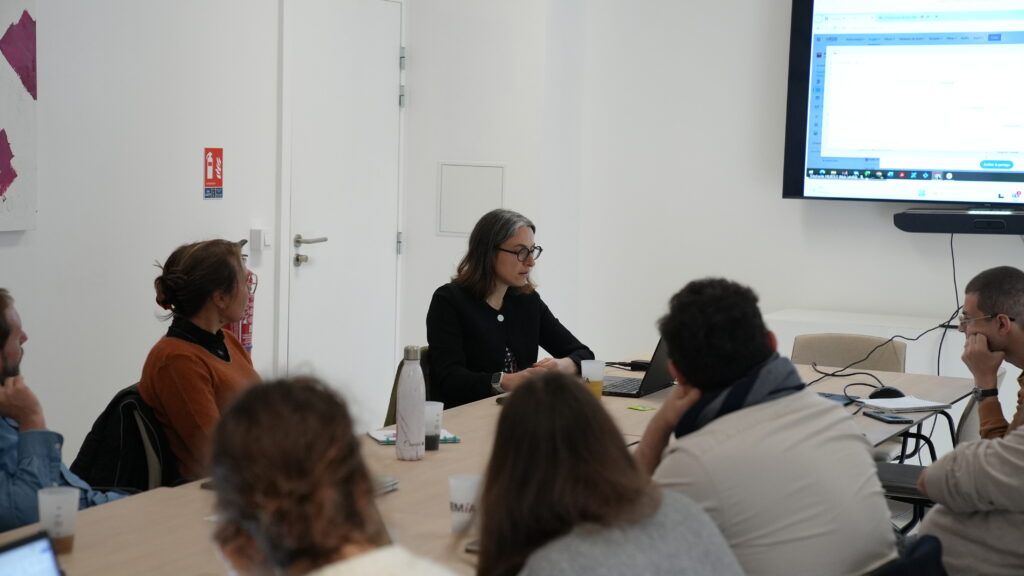

The key role of QARA in your health start-up’s strategy
13 December 2024
Last September, we launched the QARA Club, a dedicated space for professionals in Quality Assurance and Regulatory Affairs (QARA) to foster exchanges and share best practices.
Nearly 20 members have already joined and actively participate via a dedicated Slack channel. Stéphanie Hilbold, QARA at RDS, plays a central role in driving this Club and shares in this article some key insights into her profession and why it is essential to integrate this role into your start-up.
What is QARA?
The Quality Assurance and Regulatory Affairs (QARA) Manager coordinates the implementation of a quality approach within a medical device company and ensures its continuous improvement. They manage the essential quality management system (QMS) to demonstrate regulatory compliance and the quality of medical devices.
Regulations and hiring a QARA professional: a crucial challenge for health start-ups
Regulation is a critical issue for any start-up, especially in the health sector. Without compliance, product commercialization becomes impossible. It is therefore vital to anticipate the establishment of an effective regulatory management system early in the project. A fundamental step in this process is hiring a dedicated Quality Assurance and Regulatory Affairs professional (QARA).
What does a QARA professional actually do?
A QARA’s training and experience are fundamental for overseeing a project holistically and ensuring regulatory compliance from the product development stage.
By involving a QARA professional at the start of a project, they can gather relevant regulatory information and generate additional insights to guide the best strategy for bringing the product to market. Their role typically includes:
- Assessment: Deeply understanding the product and identifying specific standards and regulations applicable to its category and target market.
- Analysis: Evaluating the development timeline and available resources while considering regulatory constraints. Based on this, the QARA defines a regulatory and quality strategy, including the development of a tailored Quality Management System (QMS).
- Strategic vision: Implementing the QMS by introducing necessary tools for documentation and record management. They also define roles and responsibilities within the team to ensure everyone contributes to regulatory compliance and quality management.
- This approach ensures that the product complies with legal requirements and maintains rigorous quality management throughout its lifecycle.
Why prioritize hiring a QARA professional in your company?
Hiring a QARA professional early in product development should be a priority. Ideally, this person would be employed internally, allowing them to adapt more easily to the company’s specific needs and projects.
However, for budgetary reasons, part-time or shared QARA roles can be an alternative. While this model can work, it poses challenges, as the QARA must juggle projects with differing regulatory requirements.
Note: If a QARA professional joins a project too late, they may find themselves in a “firefighter” role, having to reorganize earlier activities to meet regulatory standards. This situation can create frustration for both the team and the QARA, making it harder to attract qualified candidates.
Internal hire or external provider?
Before hiring a QARA professional internally, working with an external provider can be a practical solution. This allows the company to access regulatory expertise without committing to a full-time role early on. However, identifying the right skills needed from the provider is essential to optimize this collaboration.
As the provider’s mission concludes, a smooth handover becomes critical. This can either be to an internal team member (often the CEO, initially engaged in the QMS under ISO13485) or to a newly hired internal QARA professional. The transition must be carefully managed to ensure continuity and maintain regulatory momentum.
What are the challenges of the QARA role?
Beyond strict regulatory requirements, a QARA professional must address human challenges to embed compliance within the company’s processes.
- Translating regulations into internal processes: Collaborating with different departments to align regulatory requirements with their workflows.
Tip: Understand each department’s responsibilities to tailor the messaging effectively. - Making compliance processes second nature: Ensuring new regulatory processes become part of the team’s daily routine.
Tip: Design user-friendly processes perceived as tools rather than constraints. - Pedagogy and creativity: Communicating regulatory requirements in engaging ways, prioritizing critical information first, and introducing secondary points gradually.
Tip: Plan educational strategies based on team feedback and adapt as needed.
Conclusion
Hiring a QARA professional is a critical step to ensure health project compliance and legal market access. Structuring this process early in product development is essential, taking into account internal challenges and project-specific requirements.
